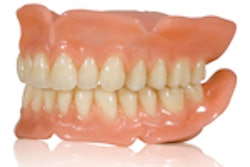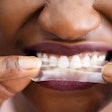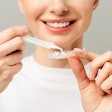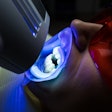Children with cleft palates may no longer need invasive jaw-widening surgery as an adult.
Tarek El-Bialy, B.D.S., Ph.D., an associate professor of dentistry in the University of Alberta Faculty of Medicine and Dentistry, has spent eight years updating materials and making precise adjustments to a dental device that will help stretch the constricted upper arch in the mouth of a child who has a cleft palate, according to the university.
If people with the condition can't have their arches widened enough while they are growing, then they are highly likely to undergo major, corrective jaw-widening surgery as an adult, where the upper arch is cut, widened and then sewn back together.
"With this new device, we are hoping that people with cleft palates and constricted upper arches won't have to get this surgery anymore," Dr. El-Bialy said in a press release.
Devices currently used are put inside the upper arch, which prevents the tongue from resting against the teeth. If the tongue can't rest against the teeth, it causes the upper arch to become even more constricted which exacerbates the situation for people with cleft palate. Because current expansion devices leave no room for the tongue, people using them usually develop mouth breathing, which, in turn, may lead to respiratory problems and other dental-related issues.
Dr. El-Bialy's device, which is protected by a patent, is instead put on the outside of the teeth in the upper arch. He says the apparatus will stretch the upper arch, will do a better job of controlling teeth movement, and won't interfere with the tongue.
Clinical trials will be required before the expansion device can be sold to patients. TEC Edmonton, the exclusive commercialization agent for the University of Alberta, has filed a patent application for the device and is working with Dr. El-Bialy to find a company that can fund trials and get the device to market.
Copyright © 2010 DrBicuspid.com



















